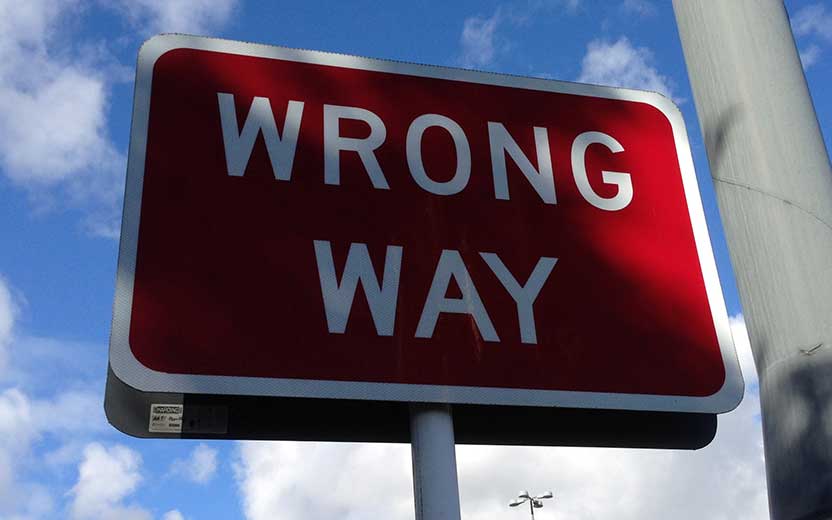By Marcus Fernandez
If it seems as though bumper-to-bumper traffic has become the norm in Tampa, it could have something to do with the millions of tourists flocking to Tampa and the nearly 445,000 new residents moving to Florida each year. More people result in more cars on the roads. But, Tampa is not the only place experiencing traffic congestion.
The average driver in the United States spends 51 hours sitting in bumper-to-bumper traffic. Along with the stress and frustration of traffic congestion, bumper-to-bumper traffic also causes accidents. One area of a heavily trafficked road, where congestion is a way of life for Tampa drivers, had 300 accidents in one year.
You may not be unable to eliminate congested roads and traffic jams, but you can adjust how you drive to reduce the risk of accidents. The following information offers an overview of traffic congestion, including insight into what state and local officials plan to do to improve traffic flow. You’ll also learn about simple measures to incorporate into your driving routine to improve safety and take some of the risk out of driving in bumper-to-bumper traffic.
How does congested traffic lead to accidents?
Engineers design and build roadways to accommodate an anticipated volume of cars, trucks, and other types of motor vehicles. More people, events, or population growth can strain a roadway’s capacity, leading to accidents or congestion. The result is bumper-to-bumper traffic.
Other factors causing traffic congestion in addition to an increase in the number of vehicles include:
- Accidents with vehicles blocking the roadway or off to the side after an accident.
- Vehicles with mechanical failures in the travel lane or side of the road.
- Debris or cargo dropped on the roadway by trucks.
- Severe weather conditions.
- Narrow or shifting lanes of travel through areas of road construction.
- Road construction vehicles or equipment temporarily blocking travel lanes.
Researchers found that a greater than normal number of vehicles using a roadway and causing congestion results in slower vehicle speeds, which should mean few accidents. However, accidents continue to happen, even in traffic jams. When streets are not crowded and cars move faster, the types of collisions and their underlying causes may vary.
According to the National Highway Traffic Safety Administration, frustration at being stuck in traffic is a leading cause of aggressive driving behavior. Weaving in and out of lanes, tailgating, failing to signal, and speeding when there is a break in the congestion are driver behaviors that cause accidents.
Prepare in advance for the unexpected
Plan for unexpected delays like accidents or disabled vehicles, even if you have a consistent daily route. To avoid the frustration and anxiety of being stuck in bumper-to-bumper traffic, a straightforward approach is to proactively plan ahead by setting up your navigation system before your scheduled departure time.
Navigation systems let you see accidents, construction, or other delays along the route before you begin a trip. Doing this enables you to find an alternate way. If none are available, you can leave earlier than scheduled to accommodate the anticipated delay.
Driving tips for bumper-to-bumper conditions
Driving defensively and being ready for the expected should be how you drive all the time, but it becomes essential when roads are congested. Stay prepared for motorists who frequently switch lanes without signaling, abruptly cut in front of you, or make sudden and unexpected stops. More safe driving tips when on congested roads include the following:
- Avoid distractions: Focus on the road and maintain control over your vehicle, which you cannot do when tuning the radio, talking or texting on a cellphone, correcting children in the back seat, or engaging in other activities that take your eyes or attention away from your primary activity of driving your car.
- Keep a safe distance from other vehicles: It may be tempting to move up and get as close to the car in from of you as possible, but it’s safer to leave enough room to avoid crashing should that driver suddenly stop. Another reason not to tailgate is to prevent a chain reaction if someone crashes into your vehicle’s rear. Maintaining a three-second safety gap between your car and the car ahead won’t necessarily guarantee you won’t get slammed in the rear, but it can significantly reduce the risk of damage to your front end and engine.
- Don’t react to aggressive drivers: Your best efforts to drive safely will not prevent an aggressive driver from tailgating or abruptly switching lanes and cutting you off. Avoid the temptation to react to other drivers’ dangerous behavior. Instead, maintain a safe distance when someone pulls in front of you. If they are tailgating, increase the distance between your car and the vehicle in front of you to avoid sudden stops that cause the tailgater to crash into you.
- Signal when changing lanes: If there is a gap in traffic and you decide to change lanes, activate your blinker before moving into the new lane.
- Use your mirrors and check blindspots: Although traffic may be moving slowly, pay attention to what’s happening to your vehicle’s sides and rear. Periodically check your surroundings using your vehicle’s mirrors, and turn your head to check blindspots that your mirrors could miss.
- Stay in the center of a lane: Driving through construction zones with traffic congestion can be intimidating because of narrower lanes. Keep your vehicle in the center of your travel lane and focus your eyes on the road ahead. Avoid looking to your left or right because it may cause your vehicle to drift to the side.
- Expect the worst: The fact that you are a good driver who follows the law and the rules of the road does not mean you can expect other drivers to do the same thing. When stuck in bumper-to-bumper traffic, expect someone to drive on the shoulder of the road to get ahead of the traffic. It’s illegal for them to do it, but you must stay alert and prepared to see and react to the worst in other drivers.
Whatever you do, stay focused and alert when driving in heavy traffic. If you feel anxious and frustrated from sitting in bumper-to-bumper traffic, pull off at the next exit. Discover a place to eat or simply relax, offering a much-needed respite from the stress of being trapped in traffic.
What to know and do in case of an accident?
Despite your best efforts to avoid it, someone crashes into your car and causes injuries to you or your passengers. Here are actionable steps to take if you sustain injuries in a bumper-to-bumper traffic accident on a congested road:
- Check yourself for injuries: Try not to move around too much as you check yourself and the passengers in your vehicle for injuries.
- Call 911: Report the accident and the injuries by calling 911 to request police and emergency medical personnel.
- Remain at the scene: It is a crime in Florida to leave the scene of an accident, so with your car until the police arrive.
- Exchange information with other drivers: Unless your injuries prevent you from doing so, exchange names, contact information, and license information with the drivers of other vehicles involved in the crash. Also, obtain names and contact information of passengers in the other vehicles.
- Get the names and contact information of witnesses: If there are witnesses to the crash, obtain their names and contact information.
- Take photographs of the scene: Use the camera on your cellphone to take photos of the accident scene, including pictures of the vehicles, debris on the ground, tire tracks, pavement markings, and traffic control devices. If you see security cameras that may have recorded the accident, take a photo of them to give to your personal injury attorney.
- Get medical treatment: Allow emergency medical personnel at the scene to examine you to determine the extent of your injuries. If they recommend that you go by ambulance to a local hospital, do not refuse. If they do not take you to a hospital, arrange for an examination and evaluation of your injuries by a doctor as soon after the accident as possible.
Ask someone else to take photos of the scene and get the names and contact information of witnesses. Wait to speak to a Tampa auto accident lawyer before discussing the accident’s cause or your injuries with anyone. Your statements at the crash scene may be used against you by the insurance company or the driver’s attorney. Limit conversations to describing your injuries to the police and emergency medical personnel who responded to the 911 call.
Contact a Tampa personal injury attorney
You may be entitled to recover compensation from the at-fault party whose negligence caused the crash in which you sustained injuries. The Tampa personal injury attorneys at KFB Law have the knowledge, experience, and determination to aggressively fight to get you the compensation you deserve from the at-fault motorist. Contact KFB Law today for a free consultation.


